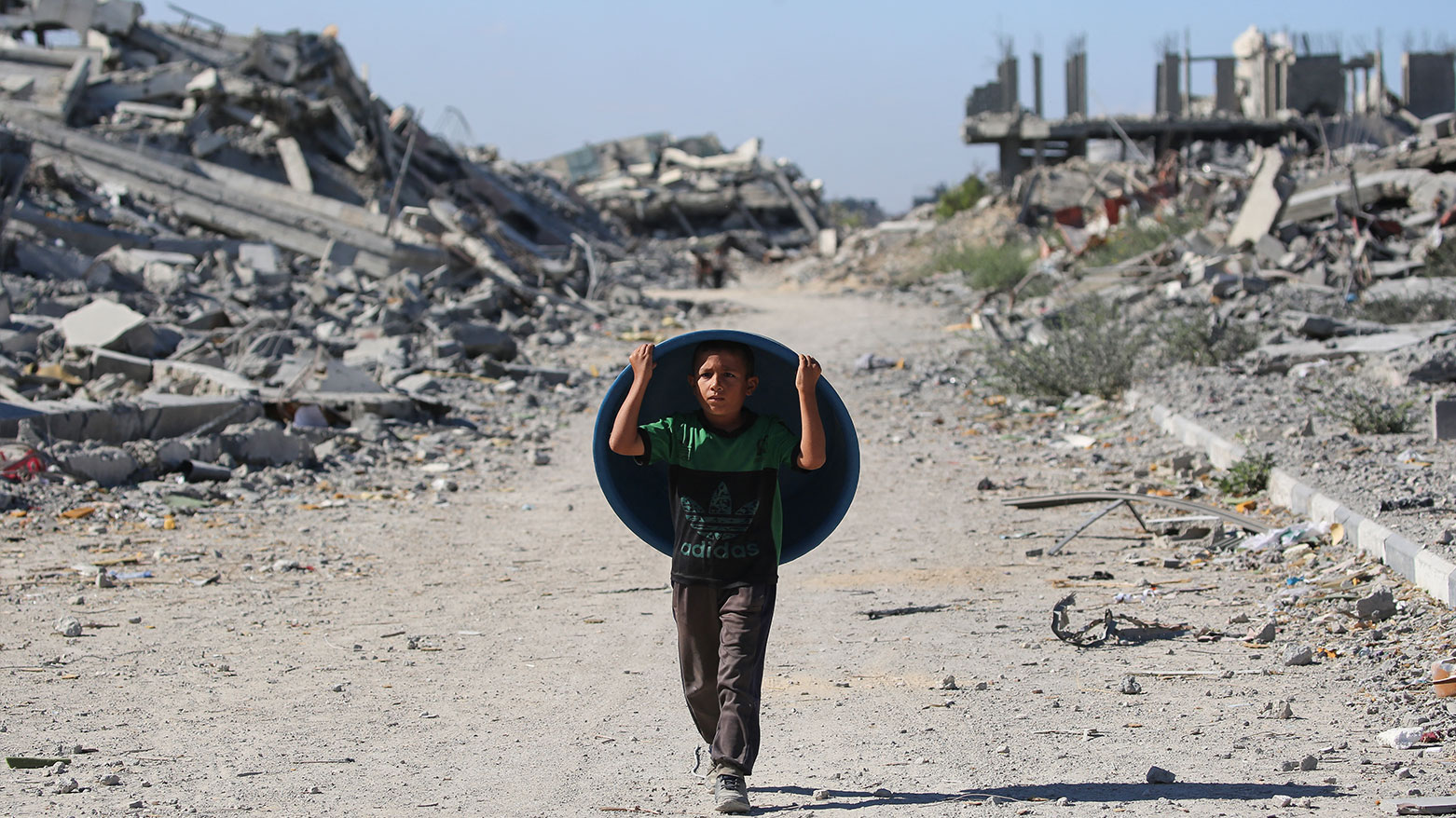Hamas Executes Alleged Collaborators Amid Crackdown in Gaza
Hamas executed alleged collaborators in Gaza while reaffirming control, as Israel received more hostage remains per the U.S.-brokered truce. President Trump reiterated that Hamas must disarm or face forced demilitarization.

Erbil (Kurdistan24) – On Tuesday, Hamas tightened its grip on Gaza’s war-torn cities, launching an extensive crackdown and executing alleged collaborators in public, even as U.S. President Donald Trump vowed that his administration would disarm the group by force if necessary.
The development came as Israel confirmed the transfer of the remains of four additional hostages through the International Committee of the Red Cross (ICRC), a day after Hamas handed over the bodies of four others and released the final 20 surviving captives, fulfilling a central condition of Trump’s Gaza ceasefire plan.
In a stark display of authority, Hamas released video footage on its official media channels showing the street execution of eight blindfolded men, accused of collaborating with Israel. The footage, apparently filmed on Monday evening, depicted the men kneeling in a line before being shot by armed militants. The group labeled them “collaborators and outlaws.”
The executions unfolded amid armed clashes between Hamas’s security apparatus and rival Palestinian clans in parts of Gaza, on the fifth day of the fragile U.S.-brokered truce.
One resident, identified only as Yahya, told AFP, “Intense clashes broke out — and are still ongoing at the moment — as part of efforts to eliminate collaborators.” Another Gaza resident, Mohammed, described heavy fighting between Hamas security units and members of the Hilles family in the Shujaiya neighborhood, near the so-called Yellow Line, behind which Israeli forces still control roughly half of Gaza.
“We heard gunfire and explosions for hours,” Mohammed said. “The security forces arrested several people. We support this. We want security and stability.”
A Palestinian security official in Gaza confirmed to AFP that Hamas’s “Deterrence Force” was conducting “field operations to ensure security and stability,” adding, “There will be no place for outlaws or those who threaten the safety of citizens.”
In a statement Tuesday, the Israeli military said four more hostages’ remains had been transferred by the Red Cross and were in route to IDF and Israeli Security Agency custody.
According to the army, the transfer followed the Monday handover of the bodies of four other captives and the release of the final 20 living hostages under the terms of Trump’s 20-point Gaza peace plan.
The military identified two of the deceased as Guy Iluz, an Israeli national, and Bipin Joshi, an agriculture student from Nepal. The Hostages and Missing Families Forum later confirmed the identities of the other two victims as Yossi Sharabi and Daniel Peretz, an officer in the Israeli army.
“Now we can finally bring closure to the nightmare that began over two years ago, and give Yossi the dignified and loving burial he deserves,” said his wife, Nira Sharabi, in a statement released by the forum.
The ongoing repatriation of bodies marks a somber phase in the post-war exchange process, which stipulates that Hamas must return the remains of 24 additional deceased hostages still held in Gaza.
President Donald Trump, who traveled to Jerusalem on Monday, hailed the hostage releases and ceasefire as a major diplomatic victory. Standing beside Israeli Prime Minister Benjamin Netanyahu, Trump described the truce as a “new beginning for peace in the Middle East” before traveling to Egypt to co-chair the Sharm el-Sheikh Peace Summit with Egyptian President Abdel Fattah al-Sisi.
In remarks to reporters at the White House following his return, Trump reiterated that Hamas must surrender its weapons or face forced disarmament. “If they don’t disarm, we will disarm them,” he declared. “And it will happen quickly — and perhaps violently.”
The Trump peace framework, endorsed Monday by over 20 world leaders in Egypt, calls for the complete demilitarization of Gaza and excludes Hamas from any future governing authority. Under the terms of the agreement, Hamas members who voluntarily “decommission their weapons” will receive amnesty, while those refusing to do so will face international sanctions and possible prosecution.
As Hamas reasserted control across the devastated enclave, residents expressed mixed emotions — relief tinged with fear. In Deir al-Balah, 34-year-old Abu Fadi al-Banna said the return of Hamas police patrols brought a sense of order. “After the war ended and the police spread out in the streets, we started to feel safe,” he said. “They began organizing traffic and clearing the markets, removing the street vendors who were blocking the roads. We felt protected from thugs and thieves.”
In Khan Yunis, Hamdiya Shammiya, 40, displaced from northern Gaza, said the end of fighting had brought fragile stability. “Thank God the war is finally over. We’ve started to breathe a little,” she told AFP. “Our lives now need patience, order, and safety. We’ve already noticed a bit of improvement.”
Meanwhile, families of the deceased hostages in Israel intensified their calls for the return of all remaining bodies. The Israeli army confirmed that four more coffins were transferred Tuesday and were being examined by forensic teams. A senior Hamas official earlier told AFP that the group was preparing to hand over the remains of “four to six additional hostages” later in the day.
The fifth day of the ceasefire saw humanitarian aid trucks entering Gaza, though chaotic scenes emerged in Khan Yunis, where desperate residents reportedly looted shipments of food and supplies. Witnesses described people trampling aid parcels in scenes of disorder, reflecting a population still struggling with fear, hunger, and uncertainty.
“For the people of Gaza, the end of war has not yet brought peace,” one aid worker told Kurdistan24. “The fighting may have stopped, but survival is still a daily battle.”
As Israel buries its dead and Gaza buries its accused, Trump’s plan to “disarm Hamas” and enforce a demilitarized Gaza faces a perilous test. The executions, reprisals, and fragile calm on the ground reveal a territory on the brink—caught between international diplomacy and the enduring grip of war’s aftermath.
